Staff Resources / Community EventsMidday@McCormick
Previous Events and Speakers

Jian Cao
Associate Vice President for Research; Cardiss Collins Professor, Department of Mechanical EngineeringManufacturing – An Integration Platform
Wednesday, February 26, 2025
Manufacturing has enormous impacts on economy and sustainability. In this talk, Professor Jian Cao will present the uniqueness of Northwestern Engineering’s manufacturing research and demonstrate how the school’s interdisciplinary research has led to innovative manufacturing processes design and control. Cao will show how researchers use machine learning to accelerate physics-based simulations and to realize active sensing with the goal of effective in-situ local control of flexible manufacturing processes, such as 3D printing and robot forming. Her solutions particularly target three notoriously challenging aspects of the process: long history-dependent properties, complex geometric features, and the high dimensionality of their design space.

Randall Berry
Chair and John A. Dever Professor of Electrical and Computer EngineeringMeeting the Spectrum Demands of Future Wireless Networks
Wednesday, October 30, 2024
Wireless networks, like cellular and WiFi, have grown significantly over the past two decades. Data sent over mobile wireless networks worldwide reached 136 exabytes – or one billion gigabytes – per month in 2023 and is projected to grow to 466 EB monthly by 2029. This growth can support connected cities and other new use cases but requires addressing challenges related to accessing the limited wireless spectrum.
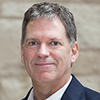
Dave Morton
Walter P. Murphy Professor of Industrial Engineering and Management SciencesDesign, Calibration, and Optimization of Pandemic Alert Systems
Wednesday, March 6, 2024
Beginning in April 2020, Dave Morton and collaborators have worked closely with local officials in Austin, Texas, to develop and maintain the COVID-19 alert system that guided public communications and policy decisions. In this talk, Dave will describe a data-driven modeling framework and stochastic optimization model for designing pathogen alert systems that can ensure consistent situational awareness, provide policy guideposts that reduce uncertainty and decision complexity, and enhance public trust and policy adherence.
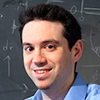
Daniel Abrams
Professor of Engineering Sciences and Applied Mathematics and (by courtesy) Physics and Astronomy; Codirector, Northwestern Institute on Complex Systems (NICO)Engineering tools for studying and augmenting human movement
Thursday, November 9, 2023
This talk will be an overview of various problems Daniel Abrams's group has worked on and approaches they've taken to mathematical modeling of social systems, including approaches that were unsuccessful. Abrams defines a system as "social" when the choices that are best for one individual are inextricably linked to the choices made by other individuals in the group. Some problems in this category include evolutionary dynamics (e.g.: animal ornamentation, the evolution of human left-handedness), social group competition (e.g.: language death, the growth of religiously unaffiliated populations), and the geographic spread of ideas (e.g.: internet adoption, contagion of smoking behavior, or obesity).

Eric Perreault
Professor of Biomedical Engineering and Physical Medicine and Rehabilitation; Associate Dean for Research Administration and OversightEngineering tools for studying and augmenting human movement
Tuesday, June 27, 2023
For most of us, the ability to move and interact with people and objects in our environment is an essential aspect of daily life. Any reduction in these abilities through aging, injury, or disease can alter our wellbeing. Our laboratory studies the neurophysiological mechanisms underlying healthy and impaired movement control to provide the foundational understanding needed to guide advancements in rehabilitation medicine. This talk will review three recent projects to provide examples of how we are using tools from engineering to study and augment human movement. The studies presented will be:
- The development of new imaging technologies to study muscle
- An assessment of how chemotherapy alters sensory processing
- The development of brain-machine interfaces for restoring movement after spinal cord injury
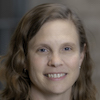
Jennifer Dunn
Associate Professor of Chemical and Biological Engineering; Director, Center for Engineering Sustainability and ResilienceAre new fuels and materials any more sustainable than today's? Insights from life cycle assessment
Wednesday, February 22, 2023
Life cycle assessment (LCA) can quide technology and policy developers towards solutions that move society towards sustainability in the interconnected spheres of energy and materials. Most of these transitions have pitfalls that LCA can help us anticipate and possibly mitigate. I will address three examples of my group's development and application of LA methods towards sustainable societal transitions: 1) biofuels as a complement to vehicle electrification, 2) using mined critical minerals in energy storage materials, and 3) chemical recycling technology for plastics. Together, these examples highlight the potential of life cvcle assessment but also some of its weaknesses and needs for further development.
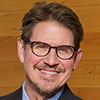
Kris Hammond
Professor of Computer ScienceTalking with the Machine: An approach to human/computer communication
Wednesday, November 30, 2022
It is clear that Artificial Intelligence (AI) is transforming the world in ways that no other set of technologies ever have. The numbers alone simply do not provide us with what we really need: information and insight. The data and the algorithms are only the first step in finding the insights we want and making them useful to the decision makers who need them. In this talk, I will present an approach to connecting humans with the intelligent systems that serve them using the tool that is most natural to us, language.

Erica Hartmann
Professor of Civil and Environmental EngineeringChemistry and the indoor microbiome: Highlighting the impacts of antimicrobial chemicals
Wednesday, August 3, 2022
There are more antibiotic-resistant pathogens indoors compared to natural outdoor environments. In our quest to diminish the number of viable microbes indoors, with the goal of halting the spread of infectious disease, we have created an arsenal of synthetic antimicrobial chemicals, which can have unintended consequences on indoor microbes by changing the structure of indoor microbial communities or selecting for certain functions, including antibiotic resistance. My research assesses whether antimicrobial chemicals are indeed associated with decreased microbial viability. This work provides a window into microbe-chemical interactions transpiring within buildings, giving us knowledge we need to make better design choices.
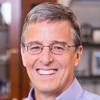
John Rogers
Louis Simpson and Kimberly Querrey Professor of Materials Science and Engineering, Biomedical Engineering and Neurological Surgery (and by courtesy Electrical and Computer Engineering, Mechanical Engineering, and Chemistry)Soft Electronics for Maternal, Fetal, Neonatal & Pediatric Health
Wednesday, October 13, 2021
Living organisms are mechanically soft, with complex, time-dependent 3D curvilinear shapes; modern electronic and microfluidic technologies are rigid, with simple, static 2D layouts. Eliminating these profound differences in properties will create vast opportunities in man-made systems that can intimately integrate into and onto the human body, for diagnostic, therapeutic or surgical function with important, unique capabilities in biomedical research and clinical healthcare. Over the last decade, a convergence of new concepts in materials science, mechanical engineering, electrical engineering and advanced manufacturing has led to the emergence of novel classes of 'biocompatible' electronic and microfluidic systems designed to interface to diverse locations across the human body.
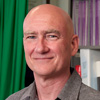
Ed Colgate
Professor of Mechanical EngineeringTouching the Virtual and Remote
Wednesday, June 23, 2021
The sense of touch – “haptics” – plays a vital role in everyday life. If you don’t believe it, try anesthetizing your fingertips (I’ll show a video!). Haptics, however, is decidedly less important when interfacing to the digital world. Our touchscreens treat the finger as a pointer and more-or-less ignore its exquisite sensitivity to shape, texture, friction, warmth, and softness. In this talk, I’ll explain a bit about the way that touch works, and then introduce you to a new class of interfaces that let you feel virtual objects such as buttons, switches, knobs and even that cashmere sweater at Nordstrom online. I’ll go on to talk about the vision for “remote touch”: allowing people (e.g., clinicians and patients) to overcome the barrier of distance with not only sight and sound, but touch and manipulation.
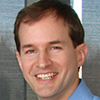
Matthew Grayson
Professor of Electrical and Computer EngineeringNo Matter Where You Go, There You Are.
The Ubiquitous Nature of Random Walks
Thursday, April 22, 2021
What do Ben Franklin's batteries have to do with earthquake aftershocks in Hawaii and human life expectancy in the year 2021? Throughout history, many seemingly disconnected natural phenomena have been observed to manifest similar behavior, with the only common thread being that the response occurs in a strongly disordered system. One microscopic way to model such systems is with a random walk in a disordered landscape whereby the time between steps is chosen at random but might become infinite on average. A pattern emerges once a statistically large number of steps are taken, revealing a universal curve which can explain the dynamics of diverse systems with representation in all fields of science and engineering. In this talk, I will review some remarkable properties of random walk theory and share some stand-out historical examples with a glimpse of what unifies them all in the omnipresent world of random walks.
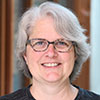
Sally McFall
Research Associate Professor, Biomedical EngineeringCOVID-19 Testing with CIGHT Developed DASH Platform
Wednesday, October 21, 2020
BME's Center for Innovation in Global Health Technologies (CIGHT) in collaboration with Minute Molecular Diagnostics is developing a point-of-care diagnostic platform that provides accurate qPCR results in 15 minutes or less. With the support of NIBIB and the Center for Innovation in Point-of-Care Technologies for HIVE/AIDS at Northwestern 9C-THAN), CIGHT is in the final stage of development of a COVID-19 test that will launch in Q1 of 2021. Sally McFall highlights the platform's unique design and the simple user steps required for the test.
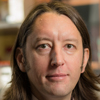
Julius Lucks
Associate Professor of Chemical and Biological EngineeringWhat is in Your Water? How Synthetic Biology Could Impact the Lives of Billions across the Globe.
Tuesday, July 21, 2020
Poor water quality affects over two billion people across the globe. While we can't often see or taste water contaminants, it turns out bacteria can. Professor Lucks presents the latest Northwestern research on creating a 'pregnancy test for water' - a cheap, fast, and reliable way that allows anyone, anywhere to detect if their water is contaminated - using synthetic biology. Professor Lucks also discusses the prospects for using similar technologies to help combat the COVID-19 pandemic.
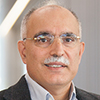
Samir Khuller
Peter and Adrienne Barris Chair of Computer ScienceWho to Marry, How to Cook and Where to Buy Gas: Solving Dilemmas of Daily Life, One Algorithm at a Time.
Tuesday, February 25, 2020
Algorithms are methods for processing data, and are in wide use today to analyze data in many applications arising from societal needs - such as health, medicine, communication, and planning. In this talk, using very simple examples from every day life, Professor Khuller illustrates some central ideas that showcase easy to understand problems and the algorithms designed for them. No computer science or programming background is needed.
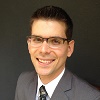
James Hambleton
Assistant Professor, Civil and Environmental EngineeringWhen the Earth Gives Way, for Better or Worse
Tuesday, August 6, 2019
Dr. Hambleton’s main research interests are in computational plasticity, geotechnical analysis, contact mechanics, soil-machine interaction, and the analysis of problems involving unsteady plastic flow. A major focal point of his work is to advance the understanding of how soils are moved and shaped through interaction with man-made objects and machinery.

Jessica Hullman
Assistant Professor, Computer Science and JournalismInformation Visualization and the Communication of Uncertainty
Wednesday, April 24, 2019
Professor Hullman's research has been supported by a Microsoft Faculty Fellowship, the NSF (CAREER, CRII), Google, Adobe, Tableau Software and the Navy, among others. Her work has received multiple Best Paper awards from top Visualization and Human-Computer Interaction venues.

Linda Broadbelt
Sarah Rebecca Roland Professor, Department of Chemical and Biological Engineering; Associate Dean for Research, McCormick School of Engineering and Applied ScienceMcCormick: A Fertile Ground for Research in Teams
Tuesday, January 8, 2019
With a trend towards research in multidisciplinary teams, the old adage of "publish or perish" in academia has been replaced by "collaborate or perish". This talk focuses on various research projects in Professor Broadbelt's group in which members are part of large, global collaborative teams and how the environment at McCormick allows them to flourish in this new era.
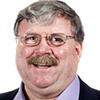
Dan Brown
Director, Ford Prototyping Lab; Faculty Advisor, Segal Professional BridgeDesigning a Better Theory - Practice Integration at Segal
Tuesday, September 25, 2018